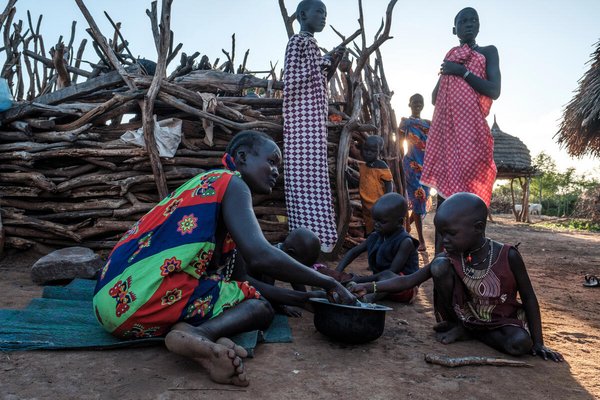 Read this article in French
Read this article in French- Share this article
- Subscribe to our newsletter
Sudan's crisis – a humanitarian disaster overlooked by the global community
The conflict, which began in April 2023, has plunged Sudan into one of its gravest humanitarian crises in recent history. It has worsened an already dire humanitarian situation, especially in the states of Khartoum, Darfur and Kordofan, pushing humanitarian needs to unprecedented levels across the country. The United Nations reports that in 2024, 24.8 million people, or one in every two inhabitants, will need humanitarian aid.
According to a recent SDC press release, vulnerable communities in Sudan lack access to essential goods and services, including food, water, shelter, electricity, education, healthcare and nutrition. People are left to fend for themselves, with few resources to ensure their physical and psychological well-being.
Mass population displacement
Before the conflict began, Sudan was home to approximately 3.8 million internally displaced persons, a majority of whom were in the Darfur region, where the security situation has been unstable for nearly two decades. The current crisis has rekindled dormant inter-ethnic tensions, leading to further displacements.
Sudan also hosted over a million refugees from neighbouring countries, including more than 800,000 South Sudanese nationals, as well as individuals from Eritrea and Ethiopia. Many have returned to their countries of origin. By the end of January 2024, over 1.7 million people had crossed the border into Egypt, Chad and South Sudan – countries that are themselves grappling with significant humanitarian, security and climatic challenges.
Increased, flexible and regional commitment
Having been active in Sudan for many years, the SDC has managed its operations remotely since the temporary closure of the Swiss embassy in Khartoum at the end of April 2023, owing to ongoing fighting in the capital. This situation has not kept the SDC from dedicating additional resources to meeting the growing needs in Sudan and the affected neighbouring countries.
In 2023, Switzerland earmarked almost CHF 64 million, allocating one-third for humanitarian activities in Sudan and two-thirds in the neighbouring countries impacted by the conflict. The SDC has made budget reallocations and, together with its partners, has demonstrated flexibility by reprogramming some activities to provide more resources for the humanitarian response.
In November 2023, a Swiss delegation visited Port Sudan in the east of the country. This coastal city, home to half a million residents, has become a refuge for numerous Sudanese men and women who have journeyed thousands of kilometres to escape violence. The SDC is funding a World Food Programme (WFP) project on the ground, which provides cash and vouchers to people who have had to leave everything behind, enabling them to meet their basic needs for food and other essentials.
Needs throughout the region
Sudan's neighbours have also been severely affected by the repercussions of the crisis. By the end of 2023, Chad had taken in more than 495,000 refugees. Furthermore, some 130,000 Chadians who had been living in Sudan returned to their home country.
Present in N'Djamena, the SDC has released an additional EUR 11.2 million to support host communities in the health, education and food security sectors in the east of the country. Chad is an extremely fragile country. Additional funding will be crucial to ensure that aid provided to Sudanese refugees does not come at the expense of the Chadian population, which is already facing security, food and climate shocks.
The situation in South Sudan is equally complex. The young country, which gained independence in 2011, faces considerable fragility and volatility, with nine million people in need of humanitarian assistance. The influx of approximately 530,000 people from Sudan in late January 2024 has exacerbated the situation. A vast majority (80%) of these individuals are South Sudanese nationals who had previously left their country seeking a better life in Sudan. Now, they have had to reverse their journey, joined by thousands of Sudanese refugees.
Since the onset of the crisis, humanitarian actors have stepped up their efforts despite facing numerous challenges, including insecurity, bureaucratic and administrative obstacles, and the looting of humanitarian goods, infrastructure and food. Furthermore, access to Darfur and Kordofan is increasingly restricted as a result of the worsening conflict, making it difficult for humanitarian aid to reach a large proportion of the population in need.
(SDC/wi)
More information:





Add a comment
Be the First to Comment